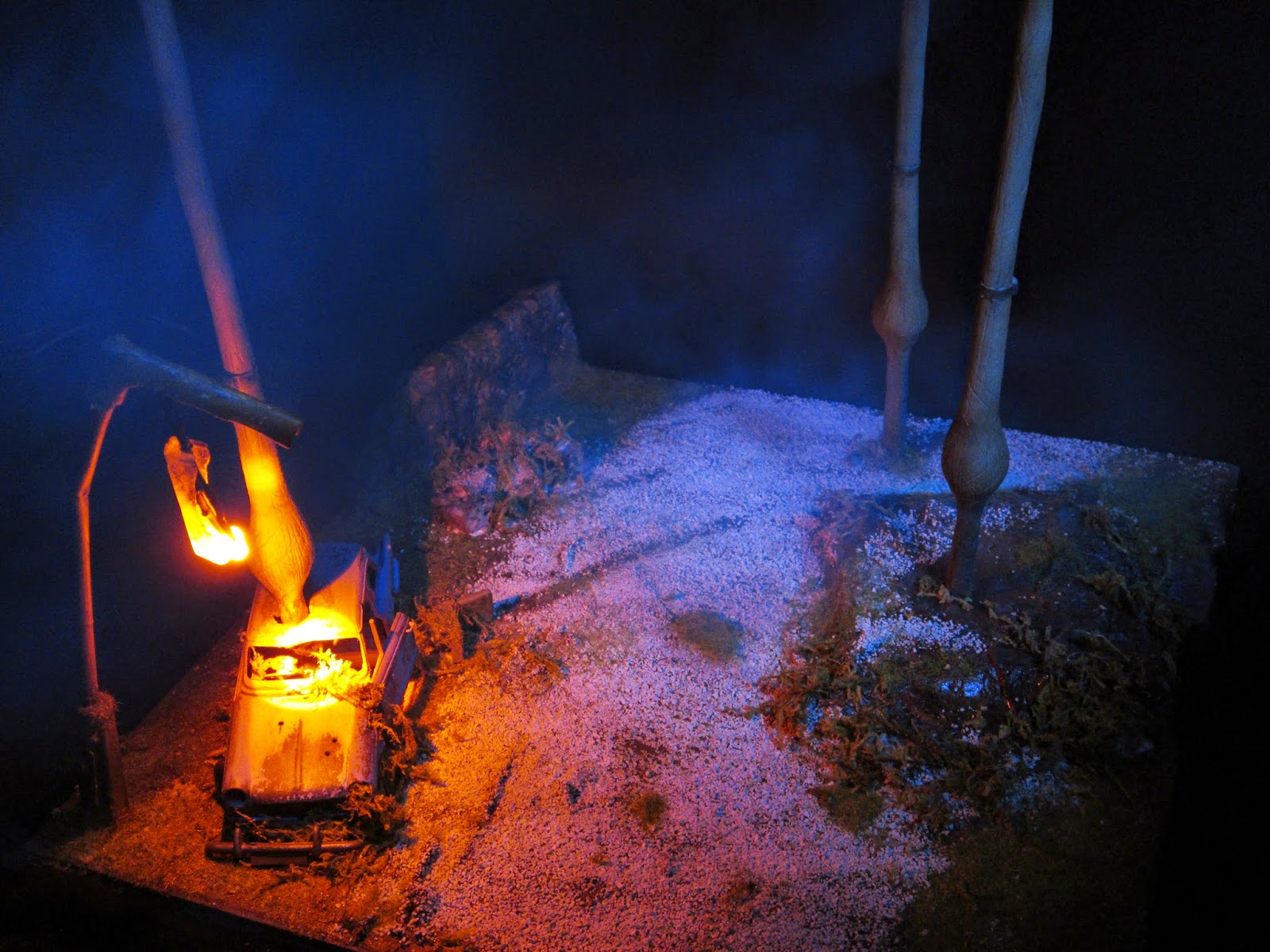Given the tricky nature of Strider I may have somewhat underestimated certain things from an engineering perspective, after all - making a 19 inch tall figure on really thin legs stand on its own with no outside armature support was always going to be tricky.
Nonetheless.. this is what I did.. Including what I think I should have done differently - so if any body sees this and thinks 'hmm I might try that' there are a couple of things I did that you should... maybe not do?.
It begin-th
To start I gathered bit of reference and again managed to stumble upon a 3d file which I could open and view in Photoshop!
From this I was able to scale it up to the size I wanted and print out some plans to build the armature against.
 | |
| These flat plans were printed onto paper and the armature was build on top of it to get the sizes just right |
 |
| not a 'thingy' |
For the gun pieces that stick out of the figure I used bits of a ball point pen cut to size.
I painted the figure in Vallejo acrylics, followed with washes of acrylic in various shades of brown and then lightly dry brushed to bring out some of the texture to the skin and sealed with Plastikote satin sealer.
A master of the legs was sculpted from Super Sculpey and moulded in a condensation cure silicone.
The top and bottom parts of the legs were joined together with another rod and Milliput - but I straight up did this wrong!
They aren't total weak sauce - but they could have been much stronger.
ANYWAY
The legs had their little stripy stripe painted on (Vallejo orange rust) and again sealed in satin clear coat. They were attached to the body using a square rod (K+S brass tubing). A square rod would stop them waving about too much.
The tippy top cover of the strider was finished up with a gloss coat. (I used Citadel Ardcoat).
And this was the first time it stood up on its own.
With the strider sorted it was time to start work on the dioramamama.
The Diorama
For the diorama, I wanted the strider to look like he'd stepping in something - something like this...
Interesting? This car was going to be painted as if it had been abandoned for some time and had become a bit busted - rust effects coming right up!
One of the strider's legs was going to have gone right through the roof. For this I carved out an opening and applied some scraps styrene to give that bend in and pierced metal look. I also cut open the door with a scalpel and snipped the roof to bend it in a little. The gaps were then filled in with milliput.
I also bashed a dremel around the surface to roughen it up a bit.
Bullet holes were added by drilling holes in two stages - a first hole going all the way through and a second slightly larger hole just a bit of the way to taper the edges.
 |
| Before |
 | |
| After! |
The rust effects were done using hairspray - something I learnt from a model maker chap. I sprayed the entire car in the rust colours I wanted, then applied a couple of coats of hairspray which will act as a barrier to whatever you paint on top. I applied my top coat colour and waited for that to dry and then applied a wet brush to the areas I wanted to rust - the top coat just comes right off.
Some spatters of paint are also interesting if you spray your paint through a mesh or sponge.
 |
| before |
 | |
| after |
The glass part was sanded with various grades of wet and dry sandpaper until it was smooth but foggy looking - I then carved out sections of it to look like a young scallywag had hurled a rock or two through it at some point.
And when it's was all put together it looked suitably ropey.
The kit itself was a simple one and the whole process with the car was really quite quick. It was pretty cool to do an airfix kit as I don't usually do those... perhaps another project in the future may call for something else... a jet? an old warship? hmm.
The figure was mounted onto the base after much guessing and worrying about it falling over. When it finally stood on its own unsupported it was time for a cup of tea.
 |
| the crowd goes wild |
Decoration was done with that scatter stuff model-people use for their railways and game tables - it's really cool stuff - I'm going to put it on everything now - necessity be damned.
There was a lot to do - so much so I had people round to help.
Little details added afterwards such as this rusty lamp-post have a battery powered orange LED dangling out of it. It was made out of bits of a disposable razor and a bit of aluminium wire covered with a drinking straw.
 |
| The rockery. Made out of foam. Carved with a dremel tool. |
The Finished thang
These shots were taken on a long exposure, painting the parts we wanted out with a blue light. Smoke was occasionally blown in for added atmosphere.
Thanks for looking.





































No comments:
Post a Comment